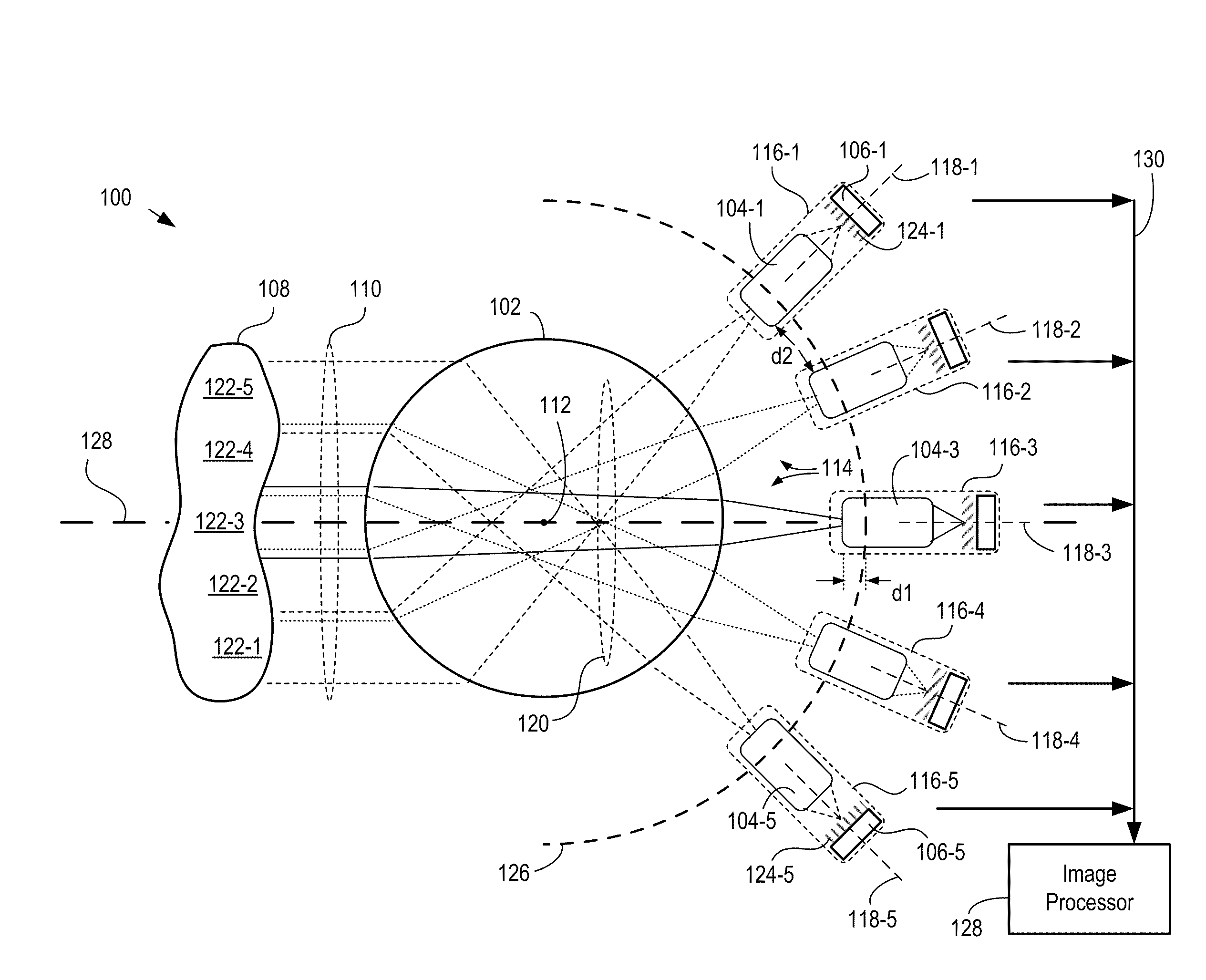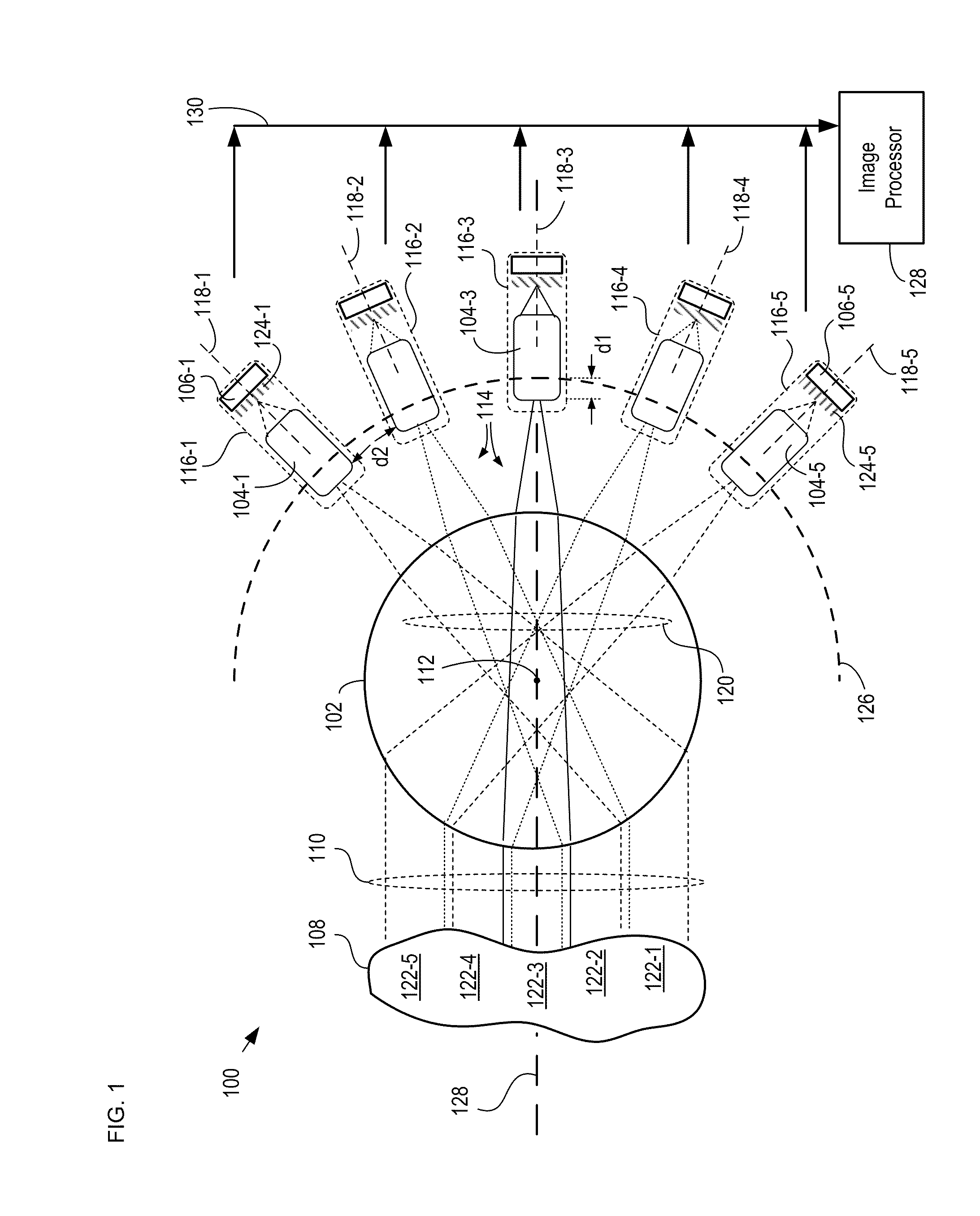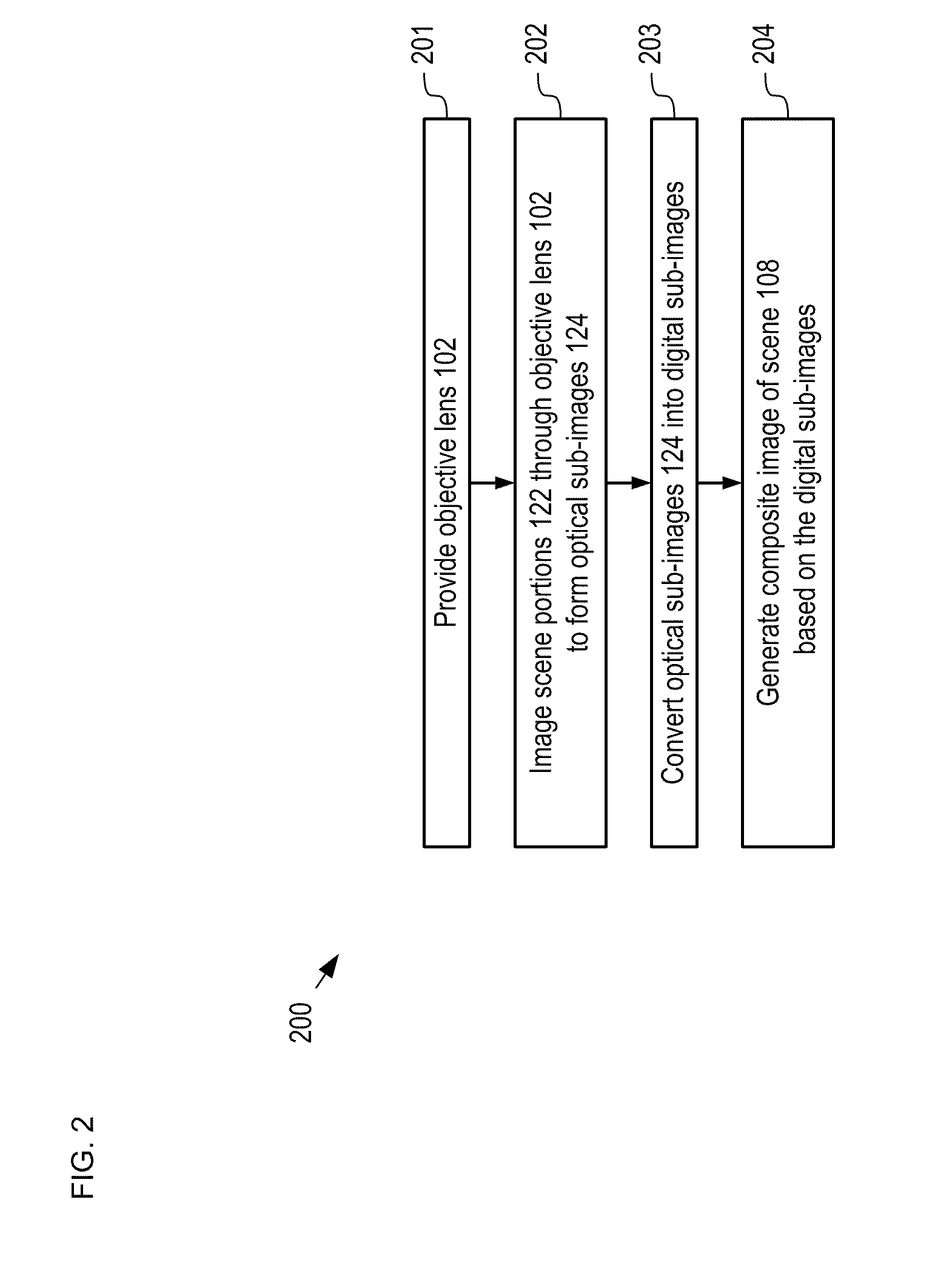Monocentric Lens-based Multi-scale Optical Systems and Methods of Use
- Summary
- Abstract
- Description
- Claims
- Application Information
AI Technical Summary
Benefits of technology
Problems solved by technology
Method used
Image
Examples
Embodiment Construction
[0036]The following terms are defined for use in this Specification, including the appended claims:[0037]Spherical is defined being characterized by (1) a common center of curvature and (2) a uniform radius of curvature. A spherical surface, for example, is a surface that has substantially the same shape as at least a portion of a sphere.[0038]Apochromatic is defined as focusing three or more wavelengths at substantially the same focal distance or image field.
[0039]This invention is a continuation-in-part of parent case U.S. patent application Ser. No. 12 / 651,894 (Attorney Docket: 524-005US) filed 4 Jan. 2010, entitled “Multi-scale Optical System.”
[0040]As disclosed in the parent case, a multi-scale optical system comprises a single objective lens and an array of small secondary lenses. The objective lens and the secondary lenses collectively image a scene onto a plurality of sensor arrays, such as photodetector arrays, as a plurality of optical sub-images. Each secondary lens has a...
PUM
 Login to View More
Login to View More Abstract
Description
Claims
Application Information
 Login to View More
Login to View More - R&D
- Intellectual Property
- Life Sciences
- Materials
- Tech Scout
- Unparalleled Data Quality
- Higher Quality Content
- 60% Fewer Hallucinations
Browse by: Latest US Patents, China's latest patents, Technical Efficacy Thesaurus, Application Domain, Technology Topic, Popular Technical Reports.
© 2025 PatSnap. All rights reserved.Legal|Privacy policy|Modern Slavery Act Transparency Statement|Sitemap|About US| Contact US: help@patsnap.com



